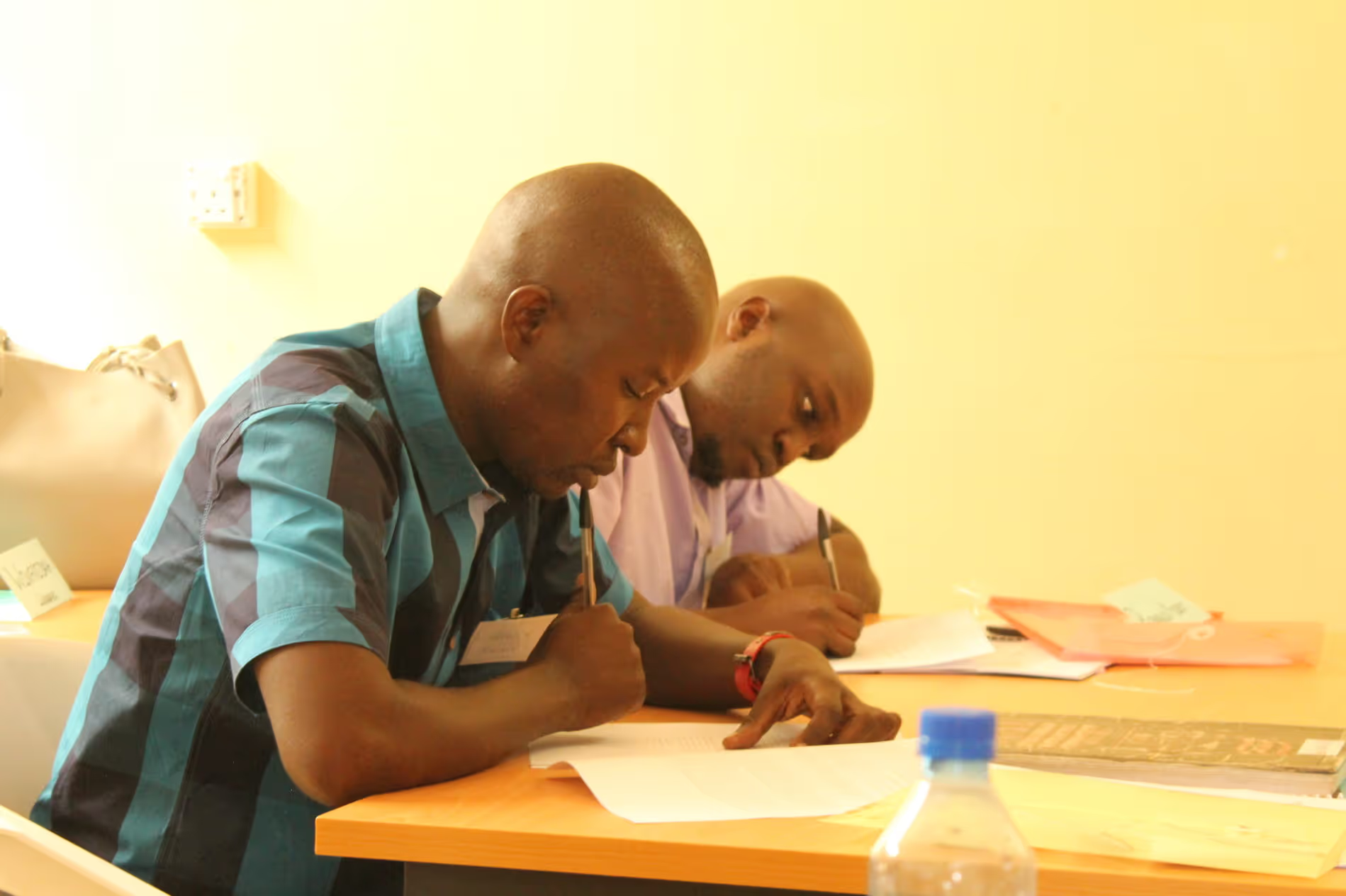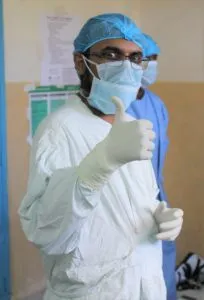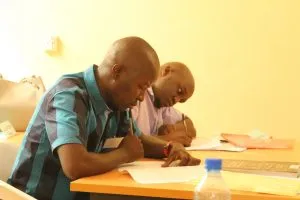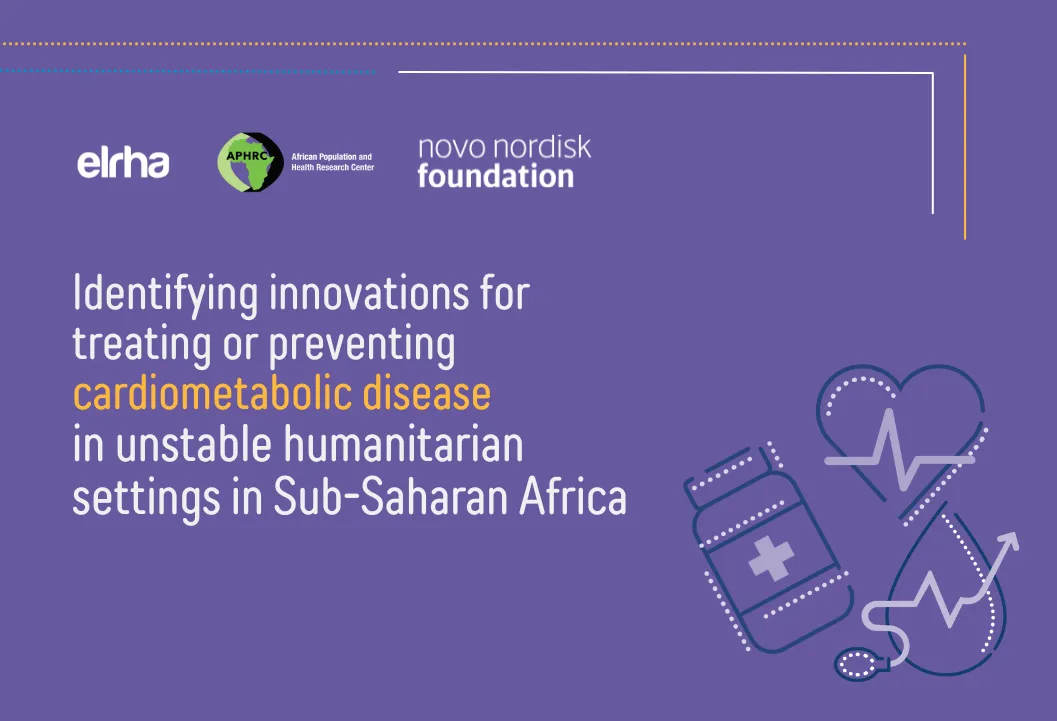From the Front Lines: A Surgeon on Increasing Access to Emergency C-Sections When No Anesthetist is Available

Turkana County in Kenya faces unique barriers in access to care, particularly flooding, poor roads, and the rural environment. “Often people are five to six hours from the hospital, sometimes in the rain, and the roads are closed,” says Dr. Taha Yusufali. Dr. Taha Yusufali is the Chief of Surgery at Sagam Community Hospital (SCH) in Luanda, Kenya. The facility is also home to the African Institute for Health Transformation and works in partnership with the Massachusetts General Hospital Division of Global Health and Human Rights (MGH GHHR) to plan and execute training weeks for ESM-Ketamine. The ESM-Ketamine package is an effective, safe, and extremely inexpensive clinical pathway that provides safe back-up anesthesia for emergency caesarean section and other painful life-saving and life-improving procedures when no anesthetist is available.

Dr. Taha is somewhat of an expert in the unique healthcare landscape of Turkana prior to working at SCH he was a general surgeon at the county’s largest healthcare facility, Lodwar Referral Hospital. He estimates that at least once every three months a mother is not able to have an emergency C-section because she cannot reach a higher-level facility in time. In these situations, both the mother and the baby are likely to die during childbirth. “I have had situations where they are referred after 24 hours of labor, or obstructed labor, fully dilated for the last six hours. You can rush them into theatre just to find the entire abdomen covered in blood. By the time you get the chance to remove the uterus, the mother passes away.”
One way to avoid this outcome is to increase access to facilities capable of performing emergency C-sections, like the sub-county referral hospitals. “Sub-County Hospitals have a medical officer who can do the surgery, but he or she doesn’t have any form of anesthesia,” says Dr. Taha. While they already have access to the drug ketamine, without the proper training most clinicians lack the confidence to utilize it as an anesthetic during a surgery, often opting to refer the patient instead, causing a delay of care.

In an effort to empower these sub-county clinicians, Dr. Solomon Orero, Senior Policy Advisor and team lead for the MGH GHHR ESM-Ketamine program here in Kenya, travelled to Turkana to motivate county officials. What he found was a team that echoed the thoughts of Dr. Taha and the Turkana county leadership was invested in improving the sub-country hospitals to increase access to emergency surgeries. In late March 2018, the operating theatres of these sub-county hospitals underwent renovation, and staffing was addressed to ensure that there were enough personnel to provide a surgical team. Turkana’s Ministry of Health also plans to conduct a refresher course for their medical officers, so they can be prepared to offer emergency surgeries.
In May 2018, we welcomed a team of ten clinicians from the Turkana County hospitals to Sagam Community Hospital for our ESM-Ketamine week training course. The trainees came from two sub-county hospitals, Katilu Sub-County Hospital and Lorugum Sub-County Hospital, and included nurses, registered clinical officers, and medical officers. These ten clinicians all left the training as certified ESM-Ketamine providers, marking an encouraging step in the effort to bring access to care and surgery closer to the mothers who need it.Turkana County in Kenya faces unique barriers in access to care, particularly flooding, poor roads, and the rural environment. “Often people are five to six hours from the hospital, sometimes in the rain, and the roads are closed,” says Dr. Taha Yusufali. Dr. Taha Yusufali is the Chief of Surgery at Sagam Community Hospital (SCH) in Luanda, Kenya. The facility is also home to the African Institute for Health Transformation and works in partnership with the Massachusetts General Hospital Division of Global Health and Human Rights (MGH GHHR) to plan and execute training weeks for ESM-Ketamine. The ESM-Ketamine package is an effective, safe, and extremely inexpensive clinical pathway that provides safe back-up anesthesia for emergency caesarean section and other painful life-saving and life-improving procedures when no anesthetist is available.

Dr. Taha is somewhat of an expert in the unique healthcare landscape of Turkana prior to working at SCH he was a general surgeon at the county’s largest healthcare facility, Lodwar Referral Hospital. He estimates that at least once every three months a mother is not able to have an emergency C-section because she cannot reach a higher-level facility in time. In these situations, both the mother and the baby are likely to die during childbirth. “I have had situations where they are referred after 24 hours of labor, or obstructed labor, fully dilated for the last six hours. You can rush them into theatre just to find the entire abdomen covered in blood. By the time you get the chance to remove the uterus, the mother passes away.”
One way to avoid this outcome is to increase access to facilities capable of performing emergency C-sections, like the sub-county referral hospitals. “Sub-County Hospitals have a medical officer who can do the surgery, but he or she doesn’t have any form of anesthesia,” says Dr. Taha. While they already have access to the drug ketamine, without the proper training most clinicians lack the confidence to utilize it as an anesthetic during a surgery, often opting to refer the patient instead, causing a delay of care.

In an effort to empower these sub-county clinicians, Dr. Solomon Orero, Senior Policy Advisor and team lead for the MGH GHHR ESM-Ketamine program here in Kenya, travelled to Turkana to motivate county officials. What he found was a team that echoed the thoughts of Dr. Taha and the Turkana county leadership was invested in improving the sub-country hospitals to increase access to emergency surgeries. In late March 2018, the operating theatres of these sub-county hospitals underwent renovation, and staffing was addressed to ensure that there were enough personnel to provide a surgical team. Turkana’s Ministry of Health also plans to conduct a refresher course for their medical officers, so they can be prepared to offer emergency surgeries.
In May 2018, we welcomed a team of ten clinicians from the Turkana County hospitals to Sagam Community Hospital for our ESM-Ketamine week training course. The trainees came from two sub-county hospitals, Katilu Sub-County Hospital and Lorugum Sub-County Hospital, and included nurses, registered clinical officers, and medical officers. These ten clinicians all left the training as certified ESM-Ketamine providers, marking an encouraging step in the effort to bring access to care and surgery closer to the mothers who need it.
Stay updated
Sign up for our newsletter to receive regular updates on resources, news, and insights like this. Don’t miss out on important information that can help you stay informed and engaged.
Related articles

.png)

Explore Elrha
Learn more about our mission, the organisations we support, and the resources we provide to drive research and innovation in humanitarian response.